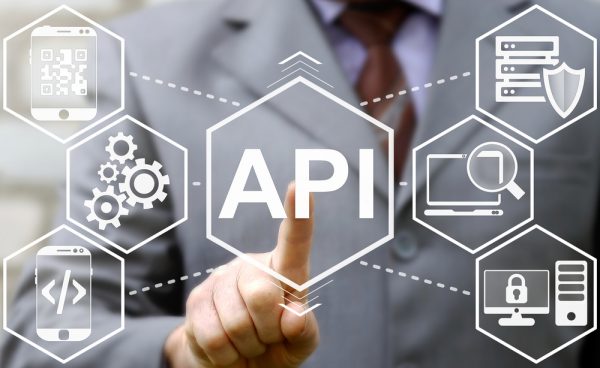Unlocking business potential by integrating telecom APIs

Today’s business leaders are faced with competing challenges and uncharted waters as they continue to navigate the impacts of COVID-19. During the past year, we’ve seen a rise in e-commerce and increased reliance on the cloud to facilitate communications and collaboration and support contactless services.
As business and IT decision makers look to capitalize on new or existing cloud investments and accelerate digital transformation efforts, implementing nimble IT resources is an essential component of the process and will set businesses up for long-term success. Getting the most out of their investment means taking advantage of every opportunity to improve operations and customer experiences through seamless integrations. One such technology that can help in this regard is APIs.
APIs are a critical tool for scalability and resilience, especially telecom APIs that power a company’s communication offerings, so they stay connected. Further, telecom APIs allow businesses to integrate telecom capabilities within their existing processes. This could include calling, messaging, or video chat functionalities, as well as more behind-the-scenes features like number porting or securing call detail records.
Not only can telecom APIs help businesses remain agile and resilient in the future, but they are a vital tool to offer new communications capabilities as customer preferences and market demands evolve in the future. Outlined below are a few use cases and benefits of telecom APIs.
Flexibility with Minimal Cost Investment
One major benefit of telecom APIs is the ability to quickly provision new services and scale communications offerings based on usage and demand. As a result, businesses can become more flexible with what they offer to customers and when they offer it. When companies need to add or change providers, number porting APIs make this process easy. Number porting APIs are another available resource that allow businesses to easily move phone numbers when they change providers, ensuring operations can stay active with little interruption.
If the company notices a particular communication channel is being used less, they can scale it. In contrast, if they notice increased demand for a service, they can quickly provision additional iterations.
This stems from the simplicity that APIs create. Once a company understands what its customers need, it can swiftly scale up or down using an API. Further, APIs allow for easy updates and enhancements – a vital ability when adjusting to market changes and customer needs. It becomes easier to make changes with other company campaigns, too. If a business needed to pull down an ad campaign if it wasn’t effective, they could reuse the phone number used in the ad for another purpose elsewhere.
Businesses can rely on APIs to deliver the latest innovative solutions to customers and avoid being stuck with outdated legacy systems and mitigate customers looking elsewhere for the latest technology.
Insight on Customer Data and Preferences
Telecom APIs enable the creation of contextual communication experiences, which aids in personalization of interactions, as well as speedier and higher quality service. For example, interactions stemming from a telecom API will provide the business with a call detail record (CDR) that corresponds with the phone number. This record helps the organization keep track of past customer communications, so that if the customer calls or messages the company again, the customer support representative can review the history of the engagement and then provide more intentional service without having to ask questions to get themselves up to speed on the customer’s needs.
Businesses can also use these records to build more intelligent reporting and inform operational decisions. For example, details such as call volume or originating location can help businesses improve decision making around staffing or resource supply to support customer service efforts. Specifically, the company can ensure the right number of people are available to answer the volume of inbound calls from a specific location or set of locations. With workers spread across locations and eventually moving back to office, CDR help provide accurate data on location and communication preferences.
Engage with Customer in Real-Time
Texting has emerged as a front runner in modern customer communications. Many businesses are embracing this communication channel due to its ability to deliver on immediacy and significant ROI on customer engagement investments. Research has shown that customers want to interact with businesses via their mobile devices, with texting as the preferred method of communication. For instance, 85 percent of people with smartphones prefer SMS or MMS communication over emails or phone calls. On top of that, nine out of 10 of people view a text within three minutes of receiving one and reply in less than two minutes. This is a stark contrast to behavior with email communication, where only 20 percent of people read emails from a business. For those that that do, they take almost two hours to reply.
This data points to a notable difference when it comes to how customers engage with and respond to different communications. To improve customer experiences, businesses should strongly consider utilizing APIs. Using messaging APIs can provide businesses with the programmatic control to create intelligent SMS and MMS interactions and fuse them with existing services. For example, a dental office can enable text-based appointment reminders with a link for the patient to check in from their phone. By communicating with customers via their preferred channel, businesses will see an increase in response rates and a positive impact to their customer retention.
Businesses that want to regain a competitive edge should lean on telecom APIs to enhance their operations. By incorporating telecom APIs into their IT toolkit, businesses will benefit from greater flexibility without significant cost burden, gain enhanced insight into customer preferences, and deliver in-demand communication channels to customers.
Photo Credit: Panchenko Vladimir/Shutterstock

Darach Beirne is vice president of customer success at Flowroute, now part of Intrado. With more than 25 years of experience building and leading B2B customer success, Darach leads Flowroute’s dedicated customer support team, driving strategy for customer success and improved customer satisfaction.
